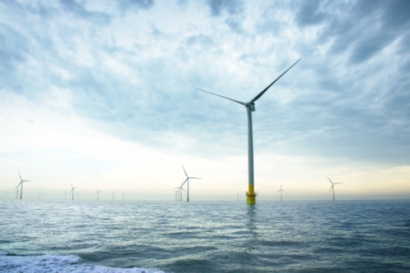
The President set a bold goal of deploying 30 gigawatts (GW) of offshore wind by 2030, enough to power 10 million homes with clean energy, support 77,000 jobs, and spur private investment up and down the supply chain.
Conventional offshore wind turbines can be secured directly to the sea floor in shallow waters near the East Coast and the Gulf of Mexico. However, deep-water areas that require floating platforms are home to two-thirds of America’s offshore wind energy potential, including along the West Coast and in the Gulf of Maine.
The Administration’s new actions will capture this vast potential to power millions of homes and businesses, grow new manufacturing and maritime industries at home, and tackle the climate crisis.
Globally, only 0.1 GW of floating offshore wind has been deployed to date, compared with over 50 GW of fixed-bottom offshore wind. America will seize this opportunity to be a frontrunner on floating offshore wind technologies, as part of President Biden’s plan for a clean energy economy built by American workers.
White House National Climate Advisor Gina McCarthy, Energy Secretary Jennifer Granholm, and Interior Secretary Deb Haaland announced:
These new goals, initiatives, and investments focus on floating technologies and build on the Administration’s all-of-government approach to developing offshore wind while advancing environmental justice, protecting biodiversity, and promoting ocean co-use.
Through the Inflation Reduction Act, President Biden secured clean energy tax credits that will further accelerate this new American industry and a thriving domestic supply chain, with support for Made in America wind turbine blades, fixed-bottom and floating platforms, installation vessels, and more.
Secretaries Granholm and Haaland announced the Floating Offshore Wind ShotTM, a new initiative to grow clean energy capacity and drive U.S. leadership in floating offshore wind design, development, and manufacturing. The Floating Offshore Wind Shot is an initiative led by the Departments of Energy (DOE), Interior (DOI), Commerce, and Transportation. DOE and the National Science Foundation will also collaborate on research and workforce development in support of the Floating Offshore Wind Shot.
The Floating Offshore Wind Shot includes an ambitious goal to reduce the cost of floating offshore wind energy by more than 70%, to $45 per megawatt-hour by 2035. Achieving this cost target will require focused research, development, and demonstration to catalyze continued cost reductions, with a focus on manufacturing, engineering, and continued increases of offshore wind turbine capacity. Agencies will also continue collaborating to develop the robust domestic supply chain and transmission infrastructure needed to accelerate floating as well as fixed-bottom offshore wind.
The Floating Offshore Wind Shot will promote ocean co-use, protect biodiversity, and advance environmental justice—including by making sure the benefits of offshore wind deployment reach underserved communities, in support of President Biden’s Justice40 Initiative. This new target is part of DOE’s Energy EarthshotsTM initiative to tackle key remaining technical challenges to reaching U.S. climate goals. In addition to harnessing untapped potential for generating clean electricity, floating offshore wind will also support economy-wide decarbonization, including by using floating offshore wind for co-generation of clean fuels and energy storage.

